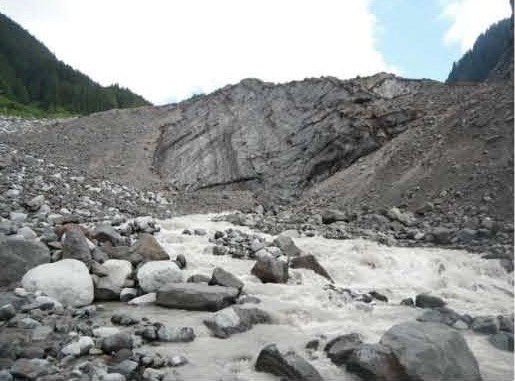Last updated: August 25, 2017
Article
Glacier Studies at Mount Rainier National Park
Importance of Research
Undergraduate researchers from Pacific Lutheran University spend summer months studying glacial meltwater on Mount Rainier to learn more about glacial hydrology and the subglacial erosional environment. Student projects include analyzing meltwater for signs of hydrothermal influence, measuring daily and seasonal changes in suspended sediment load in meltwater streams, and exploring microbial communities present in meltwater. During summer 2012, one student analyzed glacial meltwater for fecal coliform after reading about a fecal coliform study in Denali National Park (Goodwin, 2011). The goal of the study was to determine if waste associated with mountaineering activity resulted in any contamination downstream.
Status and Trend
Mount Rainier National Park is an important recreational area for the region, hosting more than 2 million visitors per year (NPS). A small percentage of these visitors visit glaciated regions, but that number is on the rise in recent years. Climbing has increased from 3,195 attempts in 1970 to 10,828 in 2011(NPS), as well as a substantial increase in the number of hikers on the alpine Muir Snowfield, east of Nisqually Glacier (Figure 1). Hikers and climbers often spend 2 to 3 days on a glacier. Current waste management protocol is the Blue Bag Method, where climbers are instructed to pack out all fecal matter to be disposed of in designated containers located at popular campsite parking lots (Figure 8). Human waste is also disposed of in a solar toilet at Camp Muir and Camp Schurman where the solid waste is hauled out by helicopter several times a year (Figure 9; NPS). The quantity of the human waste excreted on Mount Rainier motivated our testing of the mountain’s water quality as a means of gauging the success of different human waste disposal methods. One way of indicating how much fecal bacteria may be present in a water sample is through total coliform testing. While total coliforms are naturally found in many environments, they can be used to indicate the presence of fecal coliforms, which indicate water contamination by human or animal excrement.






Figure 7: Total number of registered climbers per year (NPS).
Figure 8: The Blue Bag Method for managing excrement (NPS).
Figure 9: The solar composting toilet at Camp Muir (NPS).
